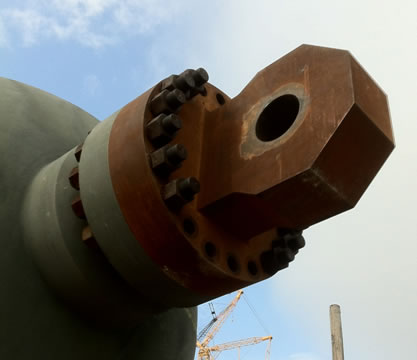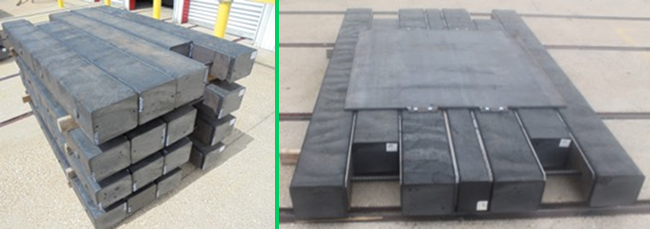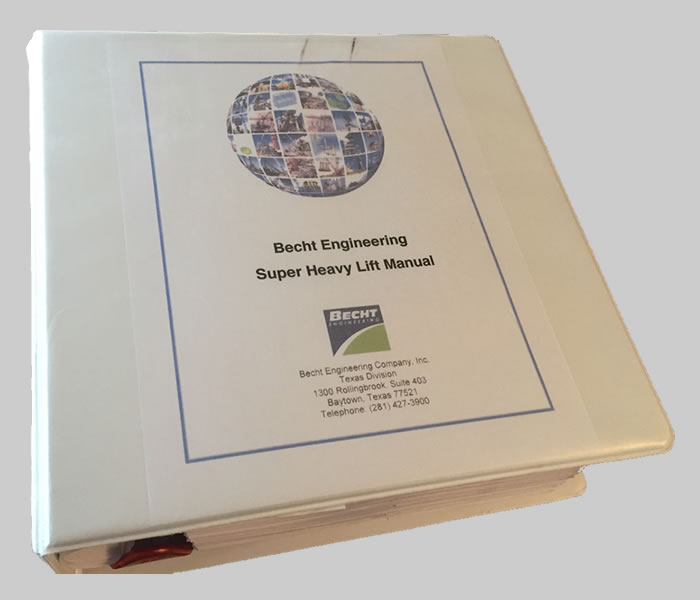Ten Questions That Must Be Answered Before Attempting Any Lift
When attempting any lift, regardless of how small or seemingly insignificant, there is some basic information that must be known and confirmed before you begin. As an industry, we do a great job planning critical and super lifts. These major lifts are executed with precision and are successful if the plan is carefully followed. We don’t do as well on the everyday routine or standard lifts. In most cases there is little or no planning – and when things go wrong – accidents result. In my experience, the majority of crane accidents result from lifts that are classified as standard when in fact there is nothing standard about any lift.
There are ten questions that must be answered for any lift. This list should be considered as the basics, i.e., a lift plan for standard lifts. The ten questions can be converted into a simple lift plan form. Then, require the crane operator to complete it before each and every lift. It only takes a few minutes and could prevent a costly accident. It has been shown that when a lift plan is required for every lift, the supervisors, operators and riggers catch mistakes before they happen.
For example: The lift could be at a high percent of capacity. Or, the crew may need to move the crane a few feet to reduce the radius which significantly improves the capacity and safety of the lift.
The Ten Questions that must be answered include:
- WHAT IS THE “VERIFIED” WEIGHT OF THE LOAD? It is not possible to make a safe lift when the weight of the load is not known or verified. Many smaller loads can be easily calculated; such as a bucket of concrete or a steel beam. Most loads are shipped to the work site by truck; the trucking company weight ticket is a good source for weight information.In any case, the load weight is critical and must be known and verified.
- WHAT IS THE MAXIMUM RADIUS? The radius is defined as the distance between the center of rotation of a crane and the center of gravity of a freely suspended load. The radius must be known and should be measured. At a minimum, a dry run should be preformed by placing the empty hook over the pick and set locations; measuring radius for each case. Calculate the lift according to the farthest distance.
- WHAT IS THE RIGGING CAPACITY AND WEIGHT? Calculate the capacity of the rigging configuration. The system is only as strong as the weakest link. Consider the effect of sling angles on the rigging and try to maintain angles of 60 degrees, or higher, to horizontal. A sling angle of thirty degrees to horizontal results in a force of two times the force applied to a vertical sling. Calculate the effective weight of the rigging system and record it on the plan. The weight of the entire rigging system is deductible from the crane chart gross capacity.
- WHAT ARE THE APPLICABLE CAPACITY CHART DEDUCTIONS? Once a crane is configured it is usually not changed often. A suggestion is to add all the deductible crane accessories and make a note of the combined deductions. Then all the operator has to do is add the weight of the rigging to the accessory total and subtract the combined total from the “gross” capacity to obtain the “net” capacity. Everything hanging under the boom top is considered part of the load. Don’t forget to include deductions for attachments that are mounted on the boom and not used; such as jibs or boom extensions.
- WHAT IS THE CRANE “NET” CAPACITY AFTER DEDUCTIONS? (At the maximum radius and crane configuration) Very often accidents occur because the operator relies solely on the “gross” capacity from the crane chart. All deductible items must be subtracted from the “gross” capacity to establish the “net” capacity.
- IS THE CRANE ON FIRM LEVEL GROUND? Ground bearing calculations and soils analysis are not practical for every lift made by small cranes. Matting should always be used; without exception. Due their small size, the manufacturers’ outrigger floats (pads) are not designed to stand-alone and do not provide an acceptable load distribution. Check to see if there has been a recent excavation in the set up area. A sure sign of trouble is when the crane tires sink into the ground while driving into position. A simple approach to matting size is to divide the crane rated capacity by 4. Then take the square root of the dividend. The result can be considered the length of one side of a square mat. This method is only a starting point and will not be sufficient in every case. Be sure to make the mat to strong enough to resist bending so as not to reduce the load distribution to the ground.Example: 50 ton crane / 4 = 12.5; the square root of 12.5 = 3.53 so your square mat should be a minimum of 3.5 feet for each side.
- ARE THERE POWER LINES ANYWHERE IN THE PATH OF THE LOAD OR CRANE ATTACHMENTS? Search for power lines and sources of electric energy before moving the crane into position. Note the locations and record them on the lift plan. Discuss the lift plan with all persons evolved so that everyone is aware of a potential hazard. A designated spotter is required to warn the crane operator of an impending contact. Beware of power lines that are hidden within tree branches or behind buildings. Statistically, power line contact is most occurring crane accident worldwide. These accidents out number all other crane accidents combined.See the OSHA Power Line Rule found in the Subpart CC – 1926.1400 standard at www.osha.gov for more information and direction.
- ARE THERE OBSTRUCTIONS ANYWHERE IN THE PATH OF THE LOAD OR CRANE ATTACHMENTS? Check the work area for obstructions. Make a dry run through the full swing path of the proposed lift and observe the boom clearance to any obstructions.
- WILL THE LOAD CONTACT THE CRANE BOOM OR JIB AT ANYTIME DURING THE LIFT? Is the load long and can it contact the boom or jib during the lift? If a load contacts a loaded boom, the boom could collapse. Will there be room to turn a long load for alignment during the lift? Always use non-conductive tag lines to control the load.
- WHAT IS THE RATIO OF CRANE CAPACITY TO NET LOAD? Calculate the percent of chart capacity by dividing the load weight by the net capacity. When a crane is nearing capacity everything has to be exactly right. If anything goes wrong it happens fast there is little chance to recover. Percent of chart often defines a critical lift and an additional, comprehensive, “Critical Lift Plan” may be in order. It is advisable to establish a definition and procedure for a “Critical Lift”. It is advisable to require the completion of a more comprehensive “Critical Lift” plan when the “Ten Question” plan indicates the lift has met the criteria for critical lift. It has been observed that when the ten-question lift plan indicated it is a critical lift; the crew will re-think the set up and lift parameters, there by reducing the percent of capacity to a more reasonable, lower ratio.
CASE STUDY – MASSIVE BRIDGE CONSTRUCTION PROJECT
The project experienced three major crane accidents during the first month of construction. After consultation with the author, the Project Manager created a ten question lift plan and made it mandatory for every lift and required a critical lift plan for any lift over 85% of chart. The critical lift plan had to be approved by the Project Manager or the designated Lift Specialist. The 10-question lift plan for every lift was a condition of employment and strictly enforced. The project was completed, in three years, on time and under budget without an additional crane related accident or incident. The project management team observed that all craft supervisors with crane related responsibilities became creative about how they set up the cranes. In many instances they were able to effect minor changes to the crane set up locations, improving the lift parameters resulting in lifts rated well below the critical lift criteria.
It should be understood that there are many things that affect the safety of a lift. The ten-question lift plan is intended to inspire creative thinking and assure the most vital parameters are considered. It does not, in any way, relieve the crane operator or rigging crew from their responsibilities to consider everything that may affect the safety on any lift.
[readon2 url=”index.php?option=com_rsform&view=rsform&formId=4&Itemid=620″]Click to Request Info[/readon2]




